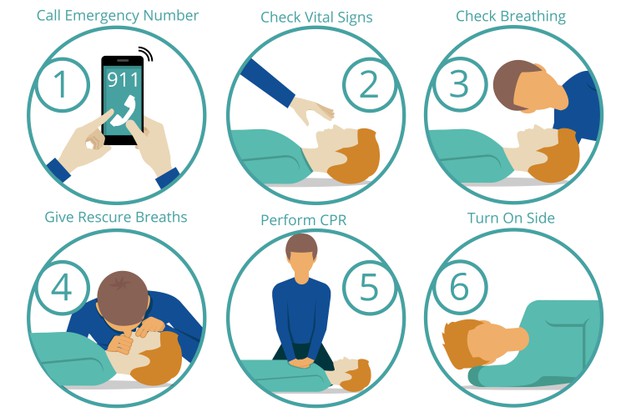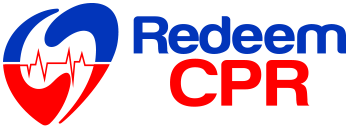
When faced with a medical emergency, it is important to respond with focus, willingness, and speed. Responding to emergencies can be tremendously stressful, especially with a limited amount of equipment. Combining techniques from both CPR and first aid programs, Emergency First Response provides skills that could potentially save someone’s life. There are many things that must be remembered and assessed upon entering an accident scene, and if you’re a First Responder, you have the duty of assessing these needs first. The following provides some information about what a First Responders duty entails.
Make Sure The Scene is Safe
One of the first and most important First Responder skills is ensuring the well-being of the responder. First Responders determine if the scene is safe before moving forward with their action plan. The victim’s health is a priority, but the first responders’ well-being is just as important. If the rescuer is in danger of getting hurt, then they will likely need assistance too, making the situation more difficult to assess and take care of. In addition to making sure the scene is safe, they must also take note of how many people are injured, the severity of the injuries, and if the first responder will need backup.
BLS and CPR
Basic life support and cardiopulmonary resuscitation, or CPR are both necessary if someone doesn’t have an open airway and is not breathing. BLS encapsulates the knowledge and skills required to perform CPR as well as the know-how of using automated external defibrillators, or AED. First Responders are trusted with providing rescue breathing, delivering quality and effective chest-compressions to circulate oxygen to the brain and vital organs, and treating choking. The high-intensity and high-stress of BLS and CPR require First Responders to adapt easily to the situation, utilizing problem-solving and critical-thinking skills. Through BLS, First Responders are placed with the duty of improving someone’s chances of surviving until advanced care arrives on the scene and is able to administer further support.
Spinal Injury Management
When approaching a victim that you believe to have a back or neck injury, do not move the victim at the chance of injuring them further. Movement could lead to complications in the life support process and might result in paralysis. When assuming if someone has neck or back injury, look for signs like:
- The person’s consciousness is changing irregularly. This could mean a head injury.
- The victim says they have severe pain in their neck or back.
- The neck or back is in an odd or irregular position.
- The victim says their neck or back is numb or weak.
- The person is paralyzed or lacks control over their limbs.
Remember, it is always better to err on the side of caution when assisting someone that you believe has a beck or back injury. Try to keep the person as still as possible and avoid moving the head or neck. Place cushions or towels on both sides of the neck. If the victim is not breathing, perform CPR but reframe from tilting the person’s head back to open the airway. First aid should be administered as seen fit without moving the person’s head or neck. If the person is wearing a helmet, like a bike or a football helmet, do not remove it. Additionally, if the victim is vomiting, ask for assistance in rolling the injured person to the side. One First Responder should be at the head while the other is along the side of the injured person, keeping the head and neck aligned during the roll.
Basic First Aid
Basic skills in first aid can include things like treating burns, stopping bleeding — whether it be from a nosebleed or wound, treating sprains, fractures, and making splints. These skills are anything but basic, as they can have huge benefits and positive impacts on the well-being of the victim.
Burns
- Make sure the person is out of harm’s way and still breathing. Cover the burn area, keeping it elevated while you watch for signs of shock from the victim. If the burn is minor, hold it under cool running water. Apply lotion and bandage the burn. If needed, give the burn victim over-the-counter pain reliever.
Chest Pain
- Finding the cause of chest pain can be difficult. Sometimes it’s a telling sign of a heart attack, while other times it means something less serious, like indigestion. If chest pain does not go away after a few minutes, seek medical help. For a heart attack, call 911 right away. If the person is awake and conscious, administer a regular-strength aspirin to reduce blood clotting. If the victim is unconscious, begin CPR, and if available, use an AED.
Fractures or broken bones
- A fracture or broken bone can be quite noticeable, especially if slight movement causes pain, the limb appears deformed or is at an irregular angle, a bone has pierced the skin, or a toe or finger of the broken limb is numb or bluish at the tip. Act quickly and stop any bleeding before immobilizing the broken limb. Splint the injury if you know how and apply padding for comfort. It is important to get the person to the emergency room as soon as possible.
Bleeding
- When dealing with a bleeding person, first see if there are protective gloves available for you to use. Next, stop the bleeding by placing a clean cloth or a bandage over the wound. If the blood seeps through the cloth, do not remove it. Instead, keep applying clean bandages and adequate pressure to stop the bleeding. Remove any debris and clean the wound. Secure bandages or clean gauze with tape.
Emergency First Responders have lifesaving skills that are a necessity in an emergency situation. Sign up for training courses with Redeem CPR and become a lifesaver today.


